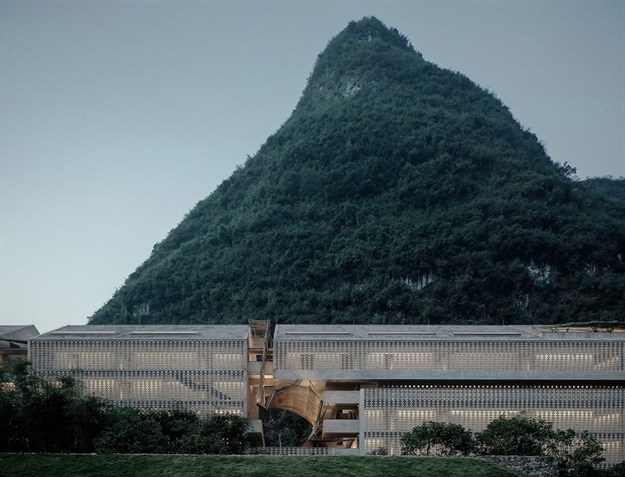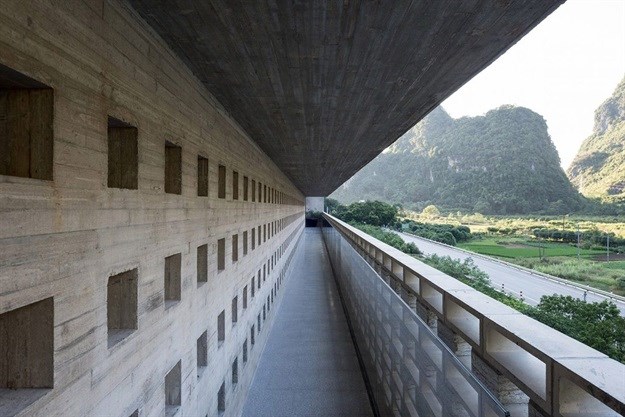Vector Architects transforms old Chinese disused sugar mill into hotel

The old sugar mill was built in 1960s and is beautifully preserved, with an industrial truss used for sugar cane transport. The studio envisioned industrial heritage as a representation of the spirit of older generations as the core principle for the project.
New suite building and villa
The architects added a new suite building and villa, while the old sugar mill and industrial truss occupy the central part of the hotel complex. The sunken plaza and reflecting pond further accentuate the spiritual symbolism and significance of the old structure.
"In order to create a sense of consistency, instead of simply copying the old materiality and texture, we try to seek this nuance where we use more contemporary materials and construction methods while remaining the tinge and masonry structure of the old," said Vector Architects.

Hollow concrete block and wood-formed cast-in-place concrete function to create the new volume with more light and transparency, visually without disturbing the existing order, and enhance natural lighting and ventilation at the same time.
"We keep the profile of new building as simple as possible to avoid unnecessary distraction to the old sugar mill caused by overly expressive geometry," they added.
"Roof slope is consistent with the original one: after the completion of the hotel complex, its profile becomes a cluster of pitched roofs. We hope the new is progressively evolved and conveys a sophisticated consistency with the old."
"We view our site as a garden for guests to wander and ponder: old sugar mill, industrial truss, new volumes, reflecting pond and path define spaces of different kinds."

Two circulation systems
Two circulation systems pass up and through the suite building: one being a completely functional corridor system while the other serving as a free public walkway, connecting three important cave-like node spaces.
The public walkway is the extension of the promenade experience on the ground level. Wandering around the resort hotel, guests experience the alternation of light and dark, change of framed landscape view, distance and elevation.

The site is surrounded by karst peaks, facing Li River to the south and a busy driveway to the north. Horizontality of architecture and verticality of karst mountain shows interaction between the man-made and the natural.
The public walkway is an artificialised and geometric version of pathway and cave carved into the karst mountain since ancient times. The ‘caves’ are carefully located so that they visually connect the architectural space with natural mountain scape.
The interior spaces of the hotel were designed by Horizontal Space Design to combine old and new in a harmonised way.
Article originally published on World Architecture Community.